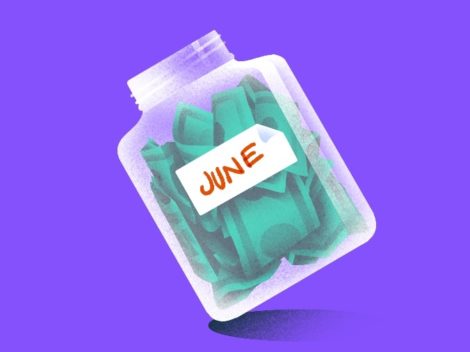With governments pumping cash into the economy in the ongoing war against COVID-19, and consumers reluctant to spend, prices are going up everywhere.
The money has nowhere to go, which has been evident in the dogged climb of the stock market. As major indexes continue breaking records, the situation seems difficult to sustain, and many high-profile executives have started to cash out.
Search less. Close more.
Grow your revenue with all-in-one prospecting solutions powered by the leader in private-company data.
Weak post-pandemic consumer demand for anything other than software means that even if stock prices were to come down, they’d have a hard time recovering, preventing attractive returns in the process. Further stimulus will not come to the rescue this time, thanks to the existing difficulties with inflation caused by the measures implemented to date.
What about other asset classes—can money go there? Not really:
- Bonds are at a huge risk of tightening monetary policy (just recently the Fed announced a change in policy).
- Crypto is at a high, and it’s a “minor” asset class (for now, in the great scheme of things).
- Real estate prices are at a high and credit is cheap. If credit becomes more expensive, people are not going to sell at a lower price and bank the loss, so prices are likely to remain high.
Could the capital diversify geographically? Not meaningfully. Most countries are facing the same problems, if not worse. The pandemic homogenized the monetary and fiscal policies of the whole globe, creating the same monetary surplus and likely inflationary environment everywhere.
On top of that, the fast-growing eastern alternative, China, is putting the brakes on freedom for the tech and capital markets.
This trend will continue, and it will push unprecedented amounts of money into startups for the foreseeable future.
SaaS startups don’t need much capital. They can reach profitability at an earlier stage and access capital from other sources such as revenue financing. This is part of the reason seed and pre-seed are exploding, both in terms of capital and in dealmaking velocity. Those are the only stages where a SaaS startup really needs money, and SaaS is driving most of the current demand.

With added capital availability, either the prices of software products will come down, or valuations will go up. The latter seems more likely.
If neither of these two scenarios manifest, VCs have a strong incentive to overinvest which will encourage startups to overspend and “burn” money. See, for example, the vast amounts invested in the rapid-delivery industry, which have been passed on as discounts to fuel customer acquisition.
If stock prices come back to earth, we’ll likely see a slowdown in IPOs, although looking at the past year it could be that everybody looking at an imminent public exit has already done so.
What’s the upside? Fierce competition for SaaS rounds, combined with outstanding returns for VCs, could free up capital for overlooked industries such as hardware, environmental projects, health and pharma.
Bottom line: 2022 could be the best year for startup funding to date, in terms of total capital invested and diversity of investments. Significantly, it should be a breakout year for sheer returns, where it is likely to be the only asset class that delivers at scale.
Daniel Faloppa is founder and CEO of Equidam, an online platform for startup valuation. Its technology enables entrepreneurs to learn what drives their valuation, transparently discuss it—thanks to clear and detailed valuation reports—and close deals with investors and buyers.
Illustration: Dom Guzman

Stay up to date with recent funding rounds, acquisitions, and more with the Crunchbase Daily.




![Illustration of a guy watering plants with a blocked hose - Global [Dom Guzman]](https://news.crunchbase.com/wp-content/uploads/quarterly-global-3-300x168.jpg)
67.1K Followers